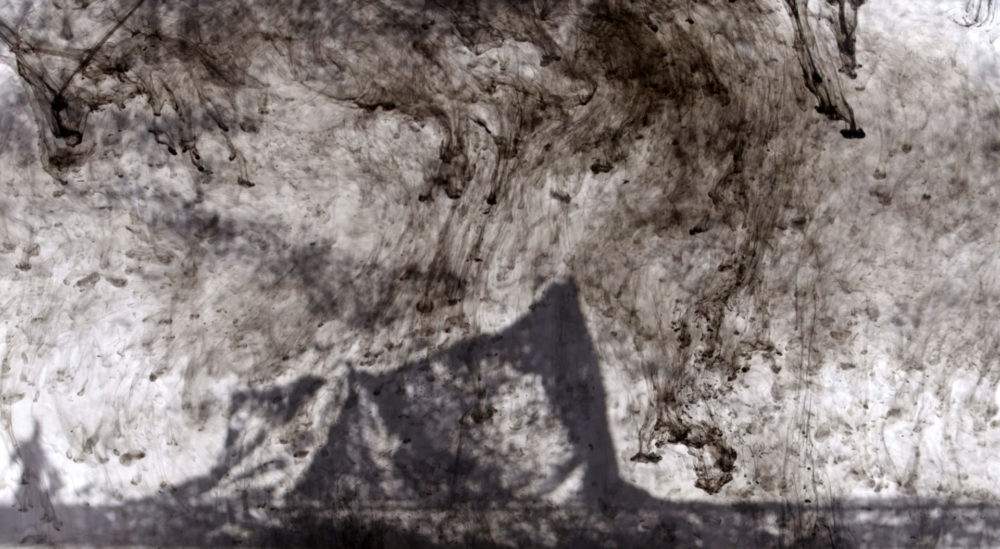It opened June 24 and will be open to the public until Sept. 12, 2022 at Madre in Naples, Italy, the exhibition Clément Cogitore. Ferdinandea, curated by Kathryn Weir.
In 1831, an island emerged in the Mediterranean waters between Sicily and Tunisia, attracting the attention of European powers eager to reclaim its strategic position. Clément Cogitore’s new body of work, Ferdinandea, aims to investigate precisely, through 16 mm films, videos, photographs and historical documents, the emergence and sinking of thisvolcanic island. It was given many names: Île Julia in France, Graham in England and, in the Kingdom of the Two Sicilies, it was named after the reigning ruler, Ferdinand II of Bourbon. Today, dormant eight meters below the waves, Ferdinandea could at any time resurface with a resurgence of seismic activity, thus triggering new geopolitical maneuvers. Cogitore presents premonitions, observations, metaphorical insights and fictions.
The rocky ridge of Ferdinandea Island rose up to 65 meters above sea level as a result of asubmarine volcanic eruption caused by the pressure of the Eurasian tectonic plate on the African plate. Although the geological event caused fear among sailors and inhabitants of the surrounding coastline, the new territory quickly became a target of European imperial aspirations, and several expeditions were organized with the intention of colonizing it. Within weeks, the island was claimed by Britain, France and the Kingdom of the Two Sicilies, but only six months after its appearance, the newly formed island sank back under the waves of the Mediterranean.
The exhibition opens with a selection of 19th-century illustrations, maps and letters completed by geologists and cartographers, sent by competing nations with the intention of documenting the formation of the island and establishing their sovereignty. The archival materials reveal a cartographic impulse linked to a European paradigm of territorial expansion and control. Upstream of these imperialist expeditions, the first to recount the signs of emergence and the volcanic activity that had produced it were the inhabitants of adjacent coastal areas. Cogitore reconstructs these events and premonitory signs in an evocative 16 mm film.
The genesis of the island and the historical events that followed are told by Cogitore in a narrative film that progressively opens up to speculative futures, where multiple scenarios are imagined. Different temporalities and registers of narrative collide and resonate on this unstable territory. The island’s mutations refer to broader processes of Mediterranean history, linking past and present, land and water. In Cogitore’s multifaceted narrative, Ferdinandea presents itself as fertile ground for re-imagining the space of the “middle sea”-once a place of exchange between cultures, now defined by necropolitics and hierarchical geographies that articulate logics of systematic exclusion.
The exhibition concludes with a nonnarrative film constructed from footage taken by the artist during a scientific expedition conducted in order to place a seismograph on the underwater geological formation of the vanished island. As the camera records the movements of the underwater technology in the underwater landscape, the basalt blocks and ancient vertices of Ferdinandea are gradually revealed in the growing darkness, and the vibrations recorded by the seismograph raise expectations about its awakening.
Image: Clément Cogitore, Ferdinandea #0 (2022). Courtesy of Chantal Crousel Consulting - Paris, Galerie Elisabeth & Reinhard Hauff - Stuttgart)
 |
| An exhibition on Ferdinandea, the emerged and sunken island of the Mediterranean, at Madre in Naples |
Warning: the translation into English of the original Italian article was created using automatic tools. We undertake to review all articles, but we do not guarantee the total absence of inaccuracies in the translation due to the program. You can find the original by clicking on the ITA button. If you find any mistake,please contact us.